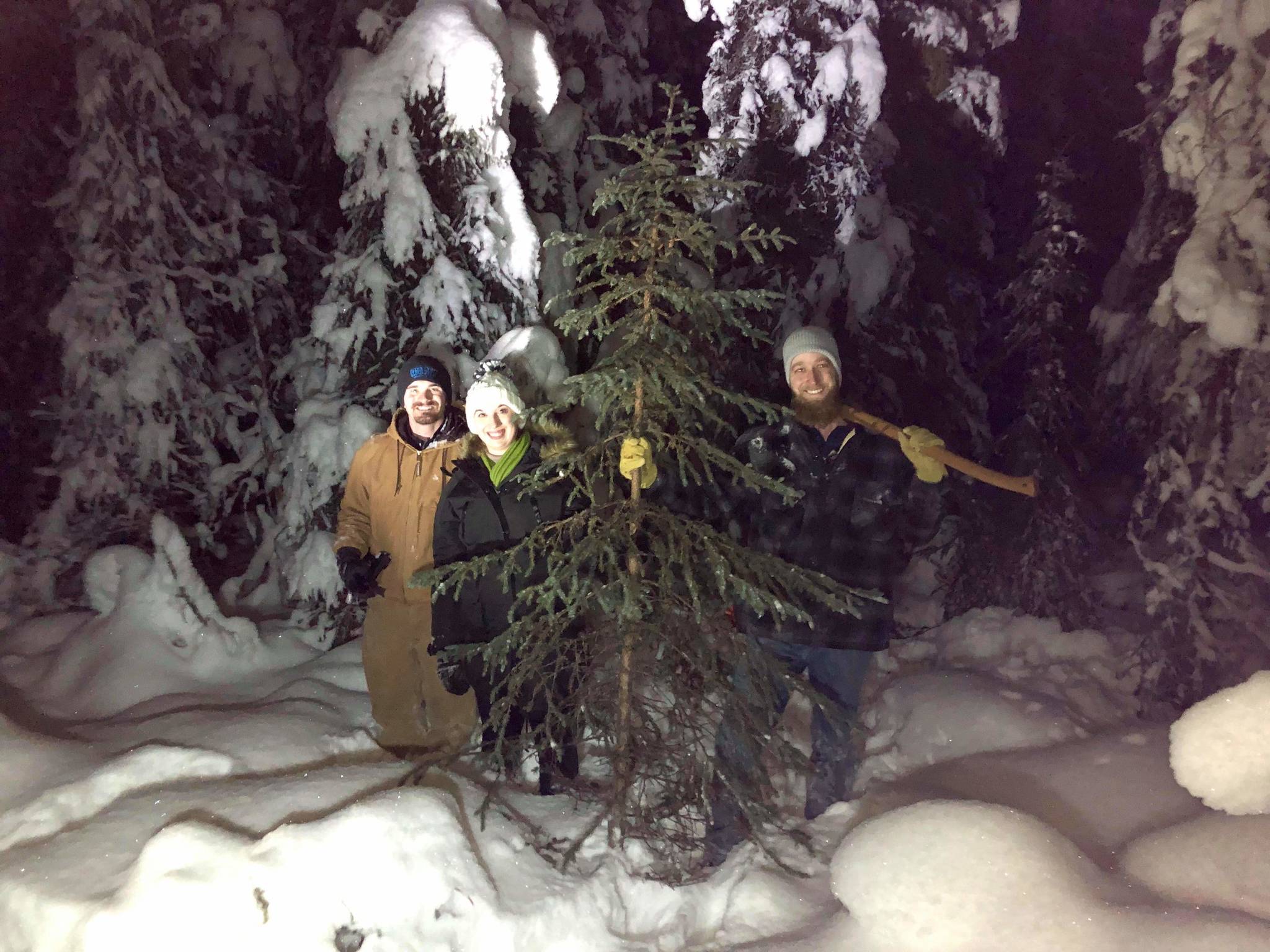Starting today and through Dec. 25, people can head to almost any part of the Kenai National Wildlife Refuge to chop down a tree for Christmas.
Refuge Park Ranger Leah Eskelin said the most common coniferous trees on the refuge are black spruce and lutz spruce, which is a white spruce hybrid species unique to the refuge. The black spruce grows smaller than the lutz, making it more appropriate for Christmas trees, but both can look a little sparse compared to other coniferous species.
“We love the trees for what they are,” Eskelin said Wednesday. “Our spruce trees aren’t the big, thick Douglas firs, but they all have their own character. My family has just started buying bigger ornaments to fill in the gaps.”
For anyone hoping to cut down a tree in the last week of November or first week of December, Eskelin suggested leaving the tree in a garage overnight before putting it inside and in water. Because the trees have spent so much time in freezing temperatures, the quick shift to a climate-controlled, indoor setting can shock the tree’s system and cause it to die early or lose needles.
Eskelin said that she and her family usually go looking for their tree in the first or second week of December.
“My birthday is in the beginning of December, so we usually line it up with that,” Eskelin said. “Waiting until closer to Christmas means a healthier tree and less vacuuming.”
Eskelin suggests looking for younger trees that are relatively far away from neighbor trees. When they are clustered in a group, Eskelin said, the individual trees can often appear fuller than they actually are.
“You don’t want to take a tree home and then realize there’s a big gap in it,” Eskelin said.
If the weather becomes problematic while out looking for a tree, Eskelin suggested marking the desired tree with a flag and coming back another day, rather than enduring the bad weather.
“You can always make two trips: one to find the tree and another to cut it down,” Eskelin said. “Remember the intention is to have fun. Do it to get some fresh air and spend some time with your family.”
In terms where to find the best trees, Eskelin said that the wooded areas along Funny River Road have been promising in the last few years, because the 2014 Funny River fire cleared the way for a lot of new growth and trees that have been able to grow in more open spaces.
These are the guidelines around tree cutting on the refuge, according to a Wednesday press release from the U.S. Department of the Interior:
Trees are free for personal use with a limit of one per household.
Trees cannot be taller than 20 feet.
Use only hand tools. Chainsaws are not permitted on the refuge.
Trees should be taken at least 150 feet away from a road, lake, stream, trail, campground or picnic area.
No tree-cutting is permitted at the refuge headquarters, visitor center or along Ski Hill Road.
People are asked to trim the stumps as close to the ground as possible for aesthetic purposes.
Call the Refuge Visitor Center at 907-262-7021 for more information.
Reach reporter Brian Mazurek at bmazurek@peninsulaclarion.com.

